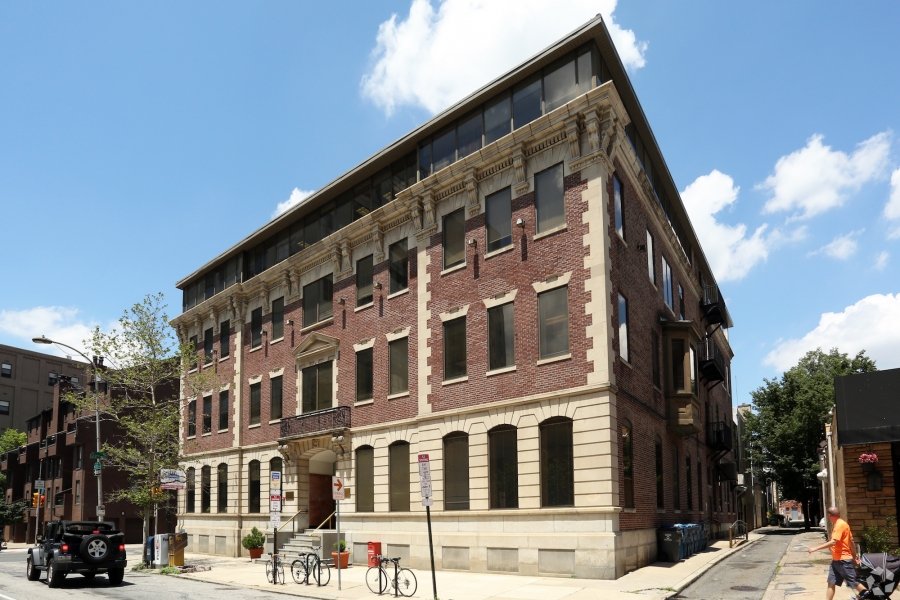
FECKLESS FORUM
The New York Times reports on the opening of the Humboldt Forum, a new Museum in Berlin. When I showed the photograph (left) to my wife her reaction was “It looks like a prison.” She wasn’t referring to the Baroque facade, of course. I haven’t seen the museum, but the photograph is like a beauty contest—Baroque vs Modernist—and it’s pretty obvious who is the winner. The Forum sits on the site of the Berliner Schloss, the immense royal palace that had been greatly expanded by Frederick the Great in the early 18th century and whose dome was based on a design by Karl Friedrich Schinkel. The Schloss, which is considered one of the great works of Prussian Baroque architecture, was damaged in the Second World War, and in 1950, the East German government entirely demolished the building (it took 19 tons of dynamite) and replaced it with the Palast der Republik, a modernist building housing the GDR parliament. After German reunification, the Palast was torn down and it was decided to re-build the original 18th-century palace. Although the Times reporter referred to the new building disparagingly as a “facsimile,” there is a long tradition of restoring damaged or destroyed buildings (the medieval St Mark’s Campanile in Venice was rebuilt in 1912 after collapsing).

YES, BUT . . .
“The test of a first-rate intelligence,” famously said F. Scott Fitzgerald, “is the ability to hold two opposed ideas in mind at the same time and still retain the ability to function.” In Philip Johnson’s New York Times obituary, Paul Goldberger described him as architecture’s “godfather, gadfly, scholar, patron, critic, curator, and cheerleader.”That is true. It is also true that although Johnson rejected Nazism after the end of the Second World War, in his younger years he attended Nazi rallies in Germany, admired Mein Kampf, and had connections to the Nazi party. Can Johnson be celebrated for the first activities and condemned for the second? Apparently not. A public Instagram letter from the largely anonymous Johnson Study Group. demands that with the purpose of “dismantling of white supremacy” MoMA and the GSD remove Johnson’s name from titles and spaces, which include the title of the museum’s chief curator of architecture and design, the department that Johnson founded, as well as the house (now owned by Harvard) that Johnson built in Cambridge. In other words, Mr. Johnson is to be cancelled.

TRUMPITECTURE
Alex Beam’s article in yesterday’s Boston Globe has a provocative title (for a liberal paper): “Trump may be right about one thing, architecture.” The author seconds Trump’s critique of Brutalism and quotes me that too often we get “courthouses that look like corporate office buildings and atrium-equipped government buildings that resemble casinos or upscale resort hotels.” Beam refers to traditional or so-called Classical buildings as “Trumpitecture.” Catchy, but misleading. Mar-a-Lago, Trump’s mansion in Pal Beach, is a Moorish-Spanish confection designed by Marion Syms Wyeth and Joseph Urban in 1934-37, and his apartment in New York’s Trump Tower is decorated in an ersatz Louis XV style, but as Beam himself writes, Chicago’s Trump Tower (designed by SOM) is a mainstream modern skyscraper, as are the Trump Tower in New York, and the Trump hotels in Vancouver, Honolulu, and Las Vegas, and the recently renamed Trump properties in Toronto and Panama. On the other hand, one of the first recent federal courthouses in a Greek Revival style (designed by HBRA) was built in Tuscaloosa in 2006. That was a full decade before Trump became President.

PARISIAN PUZZLE
Every time I leave the Larkin Building in downtown Philadelphia, where we live, I admire the office building across the street. It’s a French Renaissance pile, three stories on top of a half basement, with an obviously more recent top floor addition. The original building, very handsome, is brick with limestone and marble trim. The raised entrance is surmounted by a wrought iron papal balcony. I’ve looked inside and there is a glass-roofed atrium in the middle. I’m impressed, but also puzzled. The building looks at least a hundred years old, and when it was built this was an industrial neighborhood with a scattering of modest Philadelphia row-houses. The Larkin Building is an 11-story loft, built as a warehouse in 1912 by the same company that commissioned Wright to build its headquarters in Buffalo. So what was this rather elegant French Renaissance hôtel doing here? Was it built by some eccentric Parisian immigrant, an emigré count perhaps, or a remittance man? According the Hidden City, a website devoted to historic Philadelphia buildings, 2133 Arch Street was built in 1908 by the City to serve as a Juvenile Court and House of Detention. It was a jail!

CRIPES, NICK
I just learned that Nick Wilkinson (1942-2017) died. Sad news. We had lost touch in recent years but we saw a lot of each other in the 1980s. Nick founded and edited Open House International, a journal devoted to housing. He published a number of my papers as well as an issue devoted to “Seventeen Years of Minumum Cost Housing” and I was a member of the editorial board. Thanks to the British Council, Nick visited me in Montreal and lectured at McGill, and I visited him in Newcastle and lectured at the university, where he was then teaching. I stayed at his home. It was winter and the house was pretty cold. I still remember the medieval sight of Nick and his children huddling around the stove, toasting bread.

ROUGHLY CLASSIC
Earlier this week I watched a live video webcast of a roundtable concerning the debate over the future of federal architecture, that is, on whether federal buildings such as courthouses should have a mandated classical style. There was immediate confusion because two of the participants–Notre Dame University professors–stated that classicism wasn’t a style at all. Then what was it? There was talk about local materials, green buildings, and load-bearing construction, which wasn’t much help. But if classicism wasn’t a style what exactly would a federal mandate entail? The confusion was compounded further by the interchangeable use of “classical” and “traditional.” Classical refers to the Graeco-Roman tradition; traditional is popularly used to refer to any pre-modern architectural style such as Gothic, Spanish Colonial, or California Mission. But what about a government building such as Bertram Goodhue’s splendid Nebraska State Capitol, which opened in 1932? Wiki describers it as having “elements of Achaemenid, Assyrian, Byzantine, Gothic, and Romanesque architecture.” Goodhue himself wrote: “So, while the architectural style employed may, roughly, be called ‘Classic,’ it makes no pretense of belonging to any period of the past.” A free spirit like Goodhue would have caviled at the idea of a mandated style.

